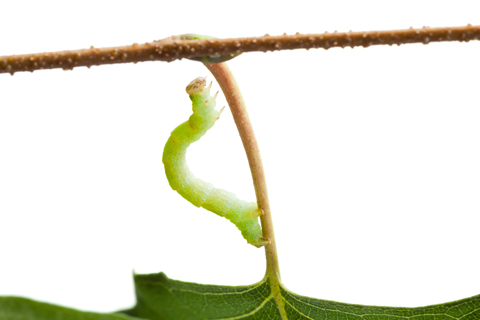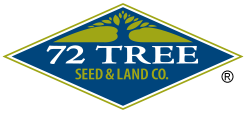Notice: Undefined variable: page in /home/vrxdg1855sn3/public_html/wp-content/themes/72tree/content.php on line 15
Notice: Trying to get property 'ID' of non-object in /home/vrxdg1855sn3/public_html/wp-content/themes/72tree/content.php on line 15
5 Tree Pests and Diseases to Avoid this Spring

Spring has arrived and with the new season comes new tree problems. It isn’t just the flowers blooming, trees budding, and pollen everywhere; tree pests and diseases are coming alive as well.
Generally, when winter weather and lower temperatures are sustained throughout the season, pests and disease won’t pose much of a threat in the spring. This year however, winter weather and temperatures were relatively mild, favoring the spread of disease and increasing pest population. It’s just the beginning of the season, and there is great potential for tree damage this spring.
The arborist at 72 Tree, Seed & Land Co. identified 5 common tree killers, and methods to get them under control this spring. Also being discussed are routine tree and landscape inspections, pest and disease prevention, and ongoing tree care throughout the year.
3 Common Spring Tree Pests
While there are a wide variety of tree pests, the following have been singled out due to the extent of the damage they can cause. So take heed because, the damage often goes unnoticed until removal of the tree is necessary.
Bagworms – If the leaves on your tree are turning brown or the needles are falling off of your pine, the culprit may be bagworms. Your tree is their food, and as they consume, your tree is unable to produce vital nutrients to keep it healthy and alive.
These worms make a bag-like nest (thus the name) which is often mistaken for a pinecone. In the fall, they mate and each female bagworm is able to lay over 500 eggs that hatch in mid spring.
There are two effective ways of controlling bagworms. You can physically remove and destroy the “bags”, or apply a pesticide in the spring as they are hatching. Once you have confirmed that bagworms have invaded your landscape, you will likely need the help of a professional tree service to keep them under control.
Cankerworms – Also known as inchworms, cankerworms chew away at the foliage of your trees. There are two species of this pest “fall cankerworm” and “spring cankerworm” but don’t let the name mislead you, they both hatch in the spring and feed on the same trees.
The damage they inflict on trees is more stress related and potentially leads to dieback, borer damage, and even root decline. For a healthy tree, one year of cankerworm defoliation won’t necessarily result in the loss of the tree. However, multiple years of defoliation will weaken the tree, making it susceptible to other pests that can ultimately lead it to its death.
When there is a breakout of this pest, there are two principle treatments.
1) Banding the trees in the fall (the wingless females stick to the band and cannot reach the canopy to deposit their eggs) is one very effective measure.
2) The other is the use of pesticides shortly after the worms have hatched. This measure is only effective while the worms are small and should be monitored by an arborist to ensure proper control is achieved.
Southern Pine Beetle – (Dendroctonus frontalis) These boring tree killers are known as the most destructive forest insect in the southern states. The signs or symptoms of an infestation are severe dieback, browning, and eventual death of entire limbs, foliage, and the tree itself.
Once this beetle attacks and succeeds at making a tree its host, the adults emit a pheromone attracting other beetles to the tree. In a matter of days, a tree’s defenses can be overrun by thousands of beetles. As one tree becomes overpopulated, the beetles will seek out nearby trees to colonize, thus expanding their population and local infestation potential.
It is the older and weakened trees that are more susceptible to beetle infestation. Control is accomplished by promoting the health of your trees, and when there is a breakout, applying insecticides to the tree bark is an alternative.
If you have a tree affected or infested by southern pine beetles, you will need an arborist to help identify witch, and if measures can be taken to thwart the infestation.
2 Common Spring Tree Diseases
Throughout the lifecycle of a tree, it may be faced with a number of fungal invaders from its roots to its leaves. While a tree builds a natural resistance to these invaders, trees are not completely immune and can be severely debilitated. The following tree diseases are ones that should be addressed immediately after being diagnosed.
Fire Blight – (Erwinia amylovora) Is a contagious plant disease. Blight is a hard to control pathogen that robs plant and tree foliage of its nutrients, causing the blackening and death of that foliage. Fire blight differs from dieback in that it leaves behind the appearance that the foliage has burned. Thus the name.
Blight is most successful in the springtime, as temperatures and humidity remain ideal for its growth. As with other pathogens, it is spread from host to host by physical contact, insects, birds and other wildlife; be careful when working in the garden because even the tools used for landscape maintenance can transmit fire blight disease.
Moreover, there is no known cure for blight. Control is achieved by pruning and destroying the affected foliage and limbs. The use of pesticides can also aid to control the pest population. As stated, the proper cleaning of equipment after use is helpful to avoid its proliferation. While the planting of resistant or tolerant species is an effective and proactive approach to overcome this disease.
NOTE: When cleaning garden and landscape equipment after handling diseases such as blight, applying a bleach solution (1 part bleach to 4 parts water) to your tools is recommended to neutralize the pathogen.
In the following link we discussed preventing fire blight tree disease in more depth, so check it out for more solutions and detail of this devastating disease.
Heart Rot – Heart rot is a fungal disease causing the softening and decay of the wood found at the center of a tree’s trunk and branches. When you see mushrooms or fungus conks attached to the trunk or branches of a tree, it can be a strong indicator that heart rot is present within the tree.
Fungi enter the tree through damaged bark or poorly pruned ares, move to the heartwood, and begin the process of decay. Softening of the heartwood leaves trees structurally weak and prone to collapse or breakage.
Hardwood trees are affected by heart rot on a global scale, and is extremely difficult to prevent. However, if a tree is growing vigorously, it may be able to isolate the affected portion of itself through a process called compartmentalization.
Control of this destructive disease may be achieved by keeping your tree healthy through proper pruning techniques, annual inspections by an arborist, and post storm maintenance and pruning.
Routine Tree and Landscape Inspections
Tree and landscape inspections start with you. When you’re out mowing, watering, pruning, or playing in your yard, observe the plants, shrubs, and trees. Look for insect infestations, discoloration in the foliage, and dieback of the limbs and crown. For more on dieback and signs of a diseased tree, visit 72tree.com/signs-diseased-tree-dieback-suckers-water-sprouts/
Once a year, hire an arborist to thoroughly inspect your trees and the plant life in your yard. They are trained to spot potential health issues, and implement the best solutions to save and/or extend the lives of your plants.
Prevention and Continued Care
The best preventative maintenance for your trees and plants is the consistent and continued care that you provide them. Healthy plants have the strength to develop defense systems that ward off both pests and disease.
Proper and timely pruning, watering, and fertilizing will help your trees reach maturity faster and in a stronger and more resistant way.
Controlling Pests and Disease All Year
Every pest has its season and every season has its pests. As you have probably gathered by now, the best way to control pests and disease is by keeping your trees, shrubs, and plants healthy through remaining proactive and aware of their state.
Pest control will help in stopping the spread of pathogenic fungi and bacteria, as well as curbing some of the more voracious insects. Fungicides will also help keep many of the pathogens away from your landscape’s ecosystem.
Keep your trees healthy this spring and for years to come by knowing what to look for and which steps to take. And when something strange pops up, call on your local arborist to address and get it solved.
